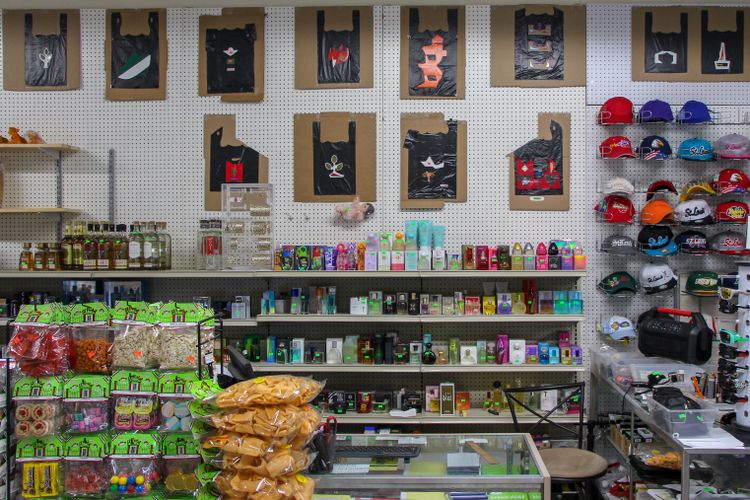ART WORLD NEWS
St Louis’s Counterpublic tests the limits of local engagement
[ad_1]
Thomas Kong’s installation in a St Louis bodega for the new triennial Counterpublic
“A ten-minute car ride!” is the locals’ usual answer for how to travel between two districts in St Louis, a spread-out city where central cultural institutions like St Louis Art Museum or the Contemporary Art Museum (CAM) are far from convenient for low-income residents.
But the triennial Counterpublic, which closed on 13 July, delivered a new format, expanding the definition of art extravaganzas that parachute into cities where local engagement has been overlooked. After testing the waters with a mini survey of the artist Dread Scott and five satellites in 2015, the exhibition team broadened its outreach and dotted the city’s Cherokee Street with works installed in 24 storefronts. The exhibition, which featured 32 artists including Kahlil Robert Irving, Azikiwe Mohammed and Cauleen Smith, brought viewers to a predominantly Latino and Black neighbourhood far from the city’s mammoth Gateway Arch or lush Forest Park.
The city’s cultural scene was previously in the spotlight in the fall of 2016, when CAM hosted Direct Drive, Kelley Walker’s solo exhibition with problematic depictions of black bodies. In a place still processing the unrest in Ferguson and its aftermath, the dialogue between art and community is a sensitive topic. “When cities organise biennials, they try to show off their best assets, but we aimed to bring people to a remote part of the city where public transportation is still terrible,” said the exhibition co-curator and St Louis local James McAnally, the co-founder of The Luminary, the non-profit behind Counterpublic.
Our conversation started at one of many Mexican-run restaurants on Cherokee Street and continued under the scorching Midwestern sun and then into the corner shop known as Economic Shop. There, Thomas Kong’s installation Be Happy blanketed the store with cutouts that the Chicago artist had created with commercial packaging at his own Illinois bodega. Shoppers left the store with plastic shopping bags adorned with the cutouts, a sign of how art was contributing to the neighbourhood’s local economy in a modest yet poetic fashion.
At Diana’s Bakery, the Kansas City-based artist Rodolfo Marron III sold galletas, traditional Mexican cookies decorated with the words “¡Aquí Estamos!”
Similarly, at nearby Diana’s Bakery, the Kansas City-based artist Rodolfo Marron III sold galletas, traditional Mexican cookies decorated with the words “¡Aquí Estamos!” or “Here we are!” Addressing the bitter issues of gentrification, displacement and racial stigma with the sweet innocence of a cookie, the work is also intended to raise questions about invisible labour and cultural identity.
At the craft beer store Hop Shop, the Brooklyn-based artist Jeremy Toussaint-Baptiste had meanwhile installed a black-box sound installation, Get Low, which immersed visitors in a rhythmic beat. Sky Hopinka’s contemplative film on patience and perseverance was screened in an auto repair shop’s waiting room. And Yowshien Kuo’s elaborately painted shirts and cowboy hats at a Mexican western-gear retailer explored the dynamic between exhibition spaces and artworks, challenging viewers to interact with what they saw.
Leaving St Louis after two days of strolling along Cherokee, I had visited a bakery, church, phone repair shop, florist and thrift shop where I had seen art bleed into life. Occasionally the two were hard to separate, and that is where Counterpublic thrived most.
[ad_2]
Source link













